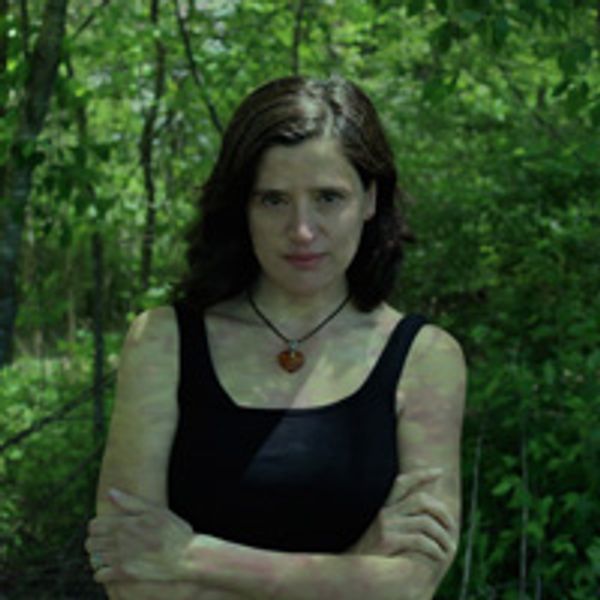Lia Purpura, Decaying Wood (detail), featured in AGNI 102
On Fear
Here are two frightening things I’ve seen: a moth with a demon on its back and a bee with an alien on its back. I should say what looked like an alien and a demon. But they both inspired a different sort of response than the “eyes” on moth wings or the cartoonish menace of a face on the underside of a spider—things I’ve admired for their form-meets-function impressiveness. The demon and alien instead resembled classic depictions of our deepest fears manifested.
Where do artists, writers, and filmmakers find their ideas of what terrifying things should look like? Are they inventing something, or rather showing us something that already exists, something we can’t see in ourselves? The artists who deal in demons and aliens interact with fear in an obvious way, but it informs so many aspects of our lives and work in more subtle ways as well.
How much of what we create and do is inspired by fear? In my own work, it’s very much involved—A fear of what the self is without writing, of failing to conduct an idea successfully from my mind to whatever form I think it needs, of losing my hold on what it is I’m trying to say. Fear of incoherence, mediocrity, or subconscious thievery. There’s a saying that photographers document what they fear losing, and I remember thinking, I must fear losing everything. But without fear, I would never write at all, and I suspect I’m not alone in this. Sometimes fear is evident in the work itself: of pain, loss, grief, fear of time moving forward or time standing still. Sometimes it’s buried in the process and is the thing that gives the work its heat.
Not long ago it was discovered that the praying mantis has learned to hunt hummingbirds on the feeders people hang in their back yards. This was around the time I was photographing a mantis and experiencing an eerie chill as it kept swiveling its head around to watch me while I tried to find a good angle. It seemed to be calculating whether there was anything to be gained by my nearness. An irrational fear of annihilation prompted me to move along, but not before I got my photograph. Sometimes we have to hold the lens steady in the face of terrible things to get the image we want.
Writers move through the world both running away (from silence, for instance) and on the hunt, and there is fear on both sides of the equation. The work a writer makes can be a layer between them and their environment—like a killdeer flapping a fake broken wing to keep the cat from noticing the nest. We want something other than the self to hold the gaze, but conversely, the whole enterprise is about connection. We will use whatever is at our disposal in the hope of distracting, entertaining, moving, delighting, making some sort of a tether between our work and a reader. The loss of the tether, the drifting into oblivion, is the worst fear for some. For others, it’s the oblivion in which no sound is worth making, or none can be heard. Whatever our own particular fear may be, we carry it with us, our constant companion, looking out from our backs at whatever tries to stop us on our way.

Carolyn Guinzio
Carolyn Guinzio is the author of six poetry collections, most recently How Much of What Falls Will Be Left When It Gets to the Ground? (Tolsun Books, 2018) and Ozark Crows (Spuyten Duyvil, 2018). Among her previous books are Spine (Parlor Press, 2016) and Spoke & Dark (Red Hen Press, 2012), winner of the To The Lighthouse Prize given by the A Room Of Her Own Foundation. Her work has appeared in The New Yorker, BOMB, Harvard Review, AGNI, Entropy, Boston Review, and elsewhere. Her website is carolynguinzio.tumblr.com. (updated 11/2018)



